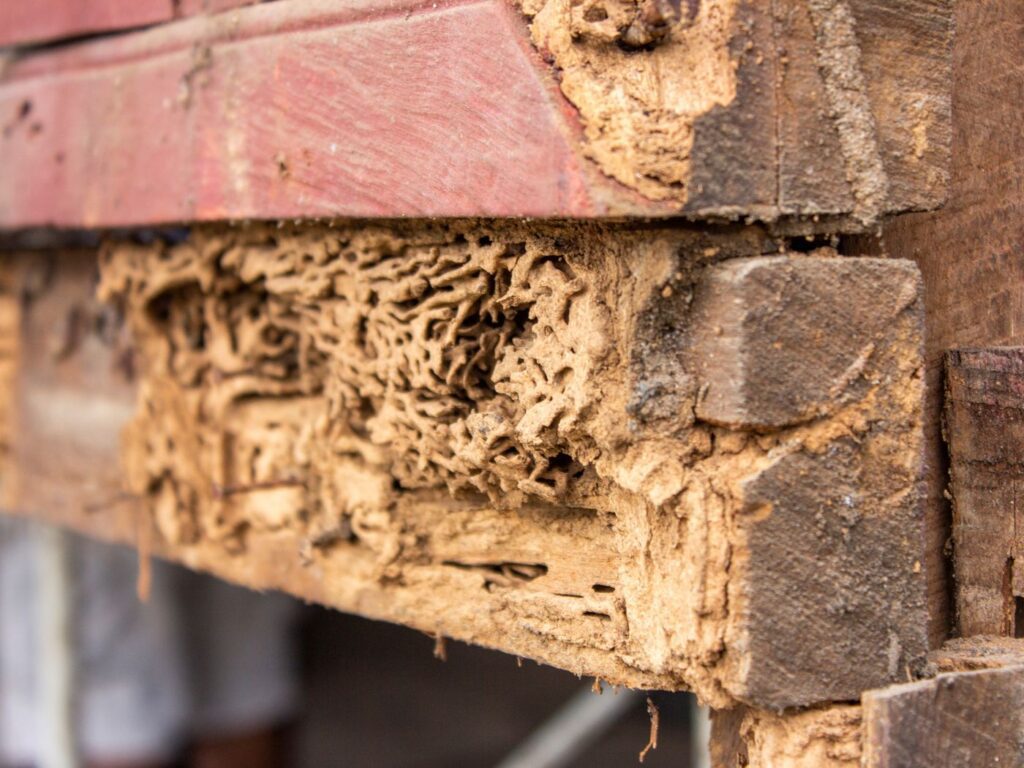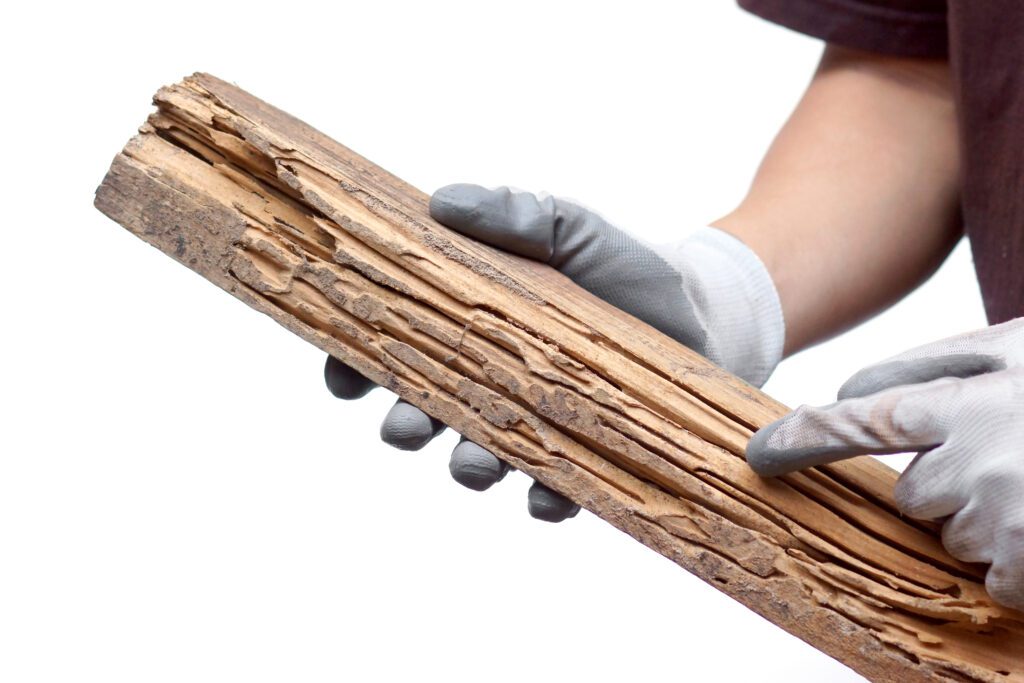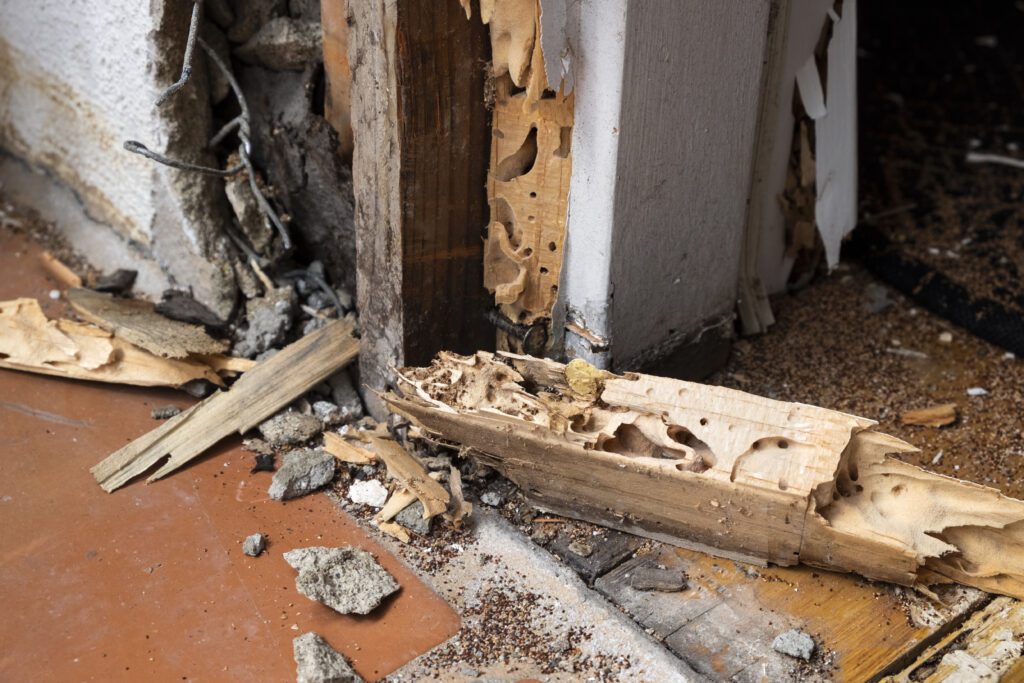
Australian operated

Australian operated
Free on-site visit & quote
Over 14,000+ homes protected
5/5 stars is most frequent rating

As a homeowner, it’s important to know what termite damage looks like, and the early signs of termites, especially in the home.
Termite damage will look different in each situation as the look of termite damage will depend on these factors:
There are many different types of termites, and all will damage timber differently, an experienced termite inspector will usually be able to tell the type of termite that is damaging the timber. Some termites will make thin channels of damage through the wood, such as Coptotermes. Schedorhinotermes will make a deeper smooth cut in the timber and look significantly different from other types of termite damage.
Termite damage will also have small spots on the areas of damage from fecal spotting from the termites. So, if the damaged areas visible have the fecal spotting signs it can be a sign of recent damage. In some cases, termite damaged areas may not have the fecal spotting marks if there is wood rot or decay in the timber, as the spotting will slowly disappear over time from the moisture ingress into the wood from moisture or wood rot.
If you have found termites or think you have found termite damage, you can view our termite identification guide here to check the type of termite possibly in your home or business.
The first step in 100% accuracy in termite diagnosis is having a termite inspection completed by a reputable company such as Pest-Ex. A termite inspection is a complete inspection of the internal, external, subfloor, and roof void areas of the home. It will include a detailed report including photos and findings.
The looks of termite damage can sometimes be confused with signs of ants, ants when in a wall can sometimes produce (ant frass) this is a fine dust that can sometimes come out of the bottom of a window frame and pile up on the floor or skirting board. This fine dust is often mistakenly identified as termite dust, which can cause homeowners to panic.
“A simple test to distinguish between ant frass and termite dust is to lightly blow on the dust using your mouth. If it blows away like a fine dust should, there’s a good chance it’s ant frass. If the dust remains intact or clumps together, it could very well be termite dust, which may indicate active termite damage.”
When ant frass is looked at closely it is usually millions of body parts of ants, as ants cannibalize, they will usually push out these fine parts onto the ground or from behind a window or skirting board. If in doubt invest in a professional termite inspection for the confirmation of identification.
Usually to the untrained eye by the time a homeowner finds signs of termite’s extensive damage has occurred behind the wall sheeting.

Termites hate disturbance, if termite damage is found a simple test is to carefully break open or peel back the paint of the damaged area, usually a size of a 5c piece will be enough. If the termites are active, they will “mud up” the area quickly within an hr. Worker termites will re-seal the opened area with fecal matter to protect themselves from ants or any threat.
If you are reading this article chances are you are looking to educate yourself on termites and gain clarity if what you have found is indeed termites or not?
If you have found termites, we recommend the following:
Call Pest-Ex for further information on our process or contact us here.

When termites are found we will do one of the following options-
If you have any questions, please feel free to reach out to the Pest-Ex team!







